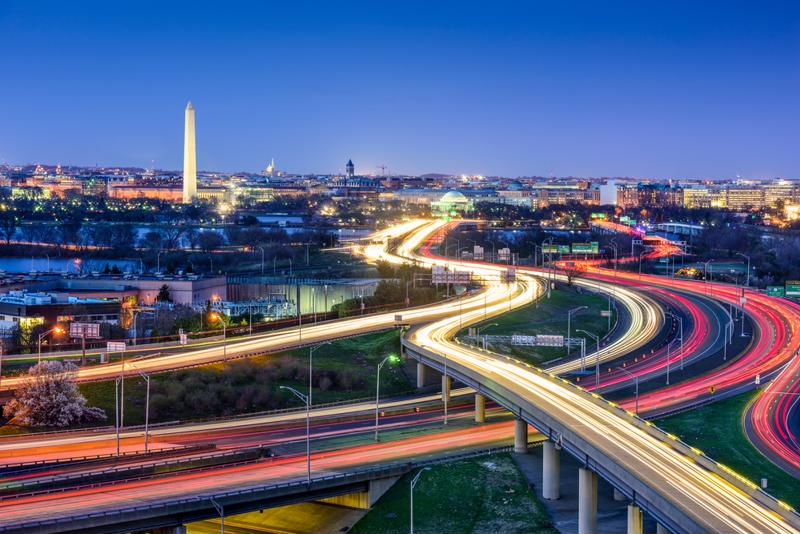By now, you have probably heard of self-driving cars. But automated cars aren't the only form of smart technology in the automotive industry. In fact, the innovation of smart highways offer plenty of solutions to common issues on the road.
Smart highways can assist in the regulation of traffic flow, the deployment of first response teams to accident sites, and even provide warnings for black ice based on the surrounding temperatures.
Local governments are beginning to pay attention to smart highway technology.Smart highways offer a plethora of solutions to common roadway woes, helping to regulate traffic flow, aiding first response teams to accidents and even creating temperature-sensitive black ice warnings. Local governments are starting to take note.
One of the most recent state government agencies to have implemented such technologies in their community is the California Department of Transportation. In 2014, the state government department's plans to upgrade the Bay Area Interstate 80 were well underway and featured plenty of smart highway technologies.
The project is being carried out with the goal of breaking up some of I-80's usual traffic jams and increasing interstate safety. A few features of the upgrade include lane closure warnings to speed limit signs that can be updated in real time to help appropriately regulate the flow of traffic (depending on driving conditions, etc.).
The same update also involved equipping San Pedro Avenue – the interstate parallel to I-80. It's another state highway that is in need of upgrades. If there is an overflow of traffic on San Pedro Avenue, signs will direct traffic back onto I-80. The effort is to keep San Pedro Avenue jam-free, according to the San Francisco Chronicle.
Highways or railways?
There are plenty of people who advocate for the use of smart highway projects over high-speed rail infrastructure in terms of a cost-effective traffic solution. Dick Startz is a professor of economics at U.C. Santa Barbara, who believes that smart highways are a viable option in the near future.
In an op-ed for the L.A. Times, Startz talked about how California is currently under a nearly $68 billion high-speed rail project that is slower and more expensive than investing in smart highway technologies and improving the existing self-driving car technology. The project – meant to connect California's mega-regions via bullet train, is already going through a number of funding issues as people question its long-term viability.

In the same op-ed, Startz made mention of an issue with the "last mile," going into detail about how he thought that high-speed rail systems wouldn't solve all of the problems on the road. He pointed out that people would still need to drive to the station and find parking before boarding the train. Highways, on the other hand, offer multiple entrances and exits which inherently diversify the flow of traffic both on and off the highway.
The cost of a smart highway
"Research suggets high-speed rail systems won't even turn a profit."
The estimated $2 billion it would take to install smart highway technology lanes on both sides of Interstate 5 (between Los Angeles and San Francisco) is not much in comparison to the cost of a new high-speed rail system. If that doesn't convince you that smart highways are the way of the future, consider this: research suggests high-speed rail systems won't even turn a profit, according to the L.A. Times.
Taxpayers might even be on the hook to provide subsidies to sustain the railway once it is up and running. As for the cost of installing smart highway lanes on both sides of Interstate 5 between Los Angeles and San Francisco, Startz noted, an estimated $2 billion puts the high-speed rail price tag to shame. Taxpayers may even be on the hook to provide loosely defined subsidies to sustain the railway once it is operational.
What makes a highway smart?
Although the term, "smart highway," can be rather vague, it typically refers to the use of technology to help with traffic flow management and accident prevention. Variable signs is one example of a common technology that has wide highway applications.
Because signs like these can be adjusted to display up-to-date information on everything from road detours to speed limits, they can also be largely responsible for much of the regulatory authority, according to the Washington State Department of Transportation.
In Netherlands, two firms began construction on a pilot smart highway in 2012, according to Gizmag. the road features warning messages that are temperature-sensitive. The pilot smart highway system also features solar-powered, glow-in-the-dark night lighting to reduce energy expenditure. The luminescent plant, which lines the road and lane borders, charges during the day and emits up to about 10 hours of light at night.
In general, smart highways offer an alternative in areas where high-speed public transportation, such as bullet train systems, is costly or geographically challenging. With sustainable technologies in development, smart highway systems hold the future of interstate transportation.
